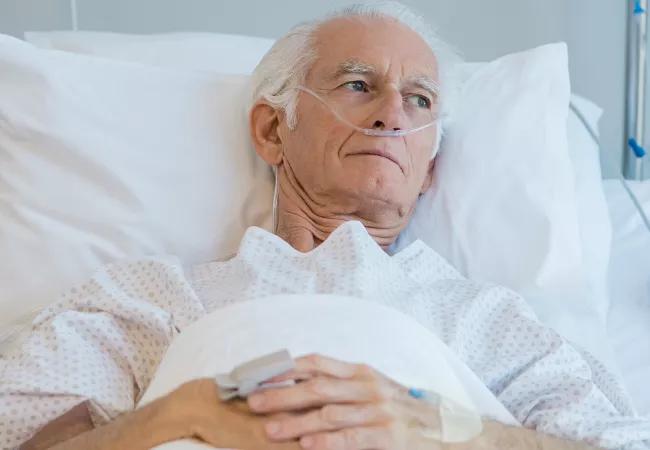Certain precautions must be taken to reduce aerosolization during treatments

Chronic obstructive pulmonary disease (COPD) is the fourth most common cause of death in the United States, and its presence in COVID-19 patients may put them at higher risk of a more severe disease course. A guide to managing COPD patients during the pandemic has been presented by Amy Attaway, MD, in a short review included in Cleveland Clinic Journal of Medicine’s collection of COVID-19 Curbside Consults.
Cleveland Clinic is a non-profit academic medical center. Advertising on our site helps support our mission. We do not endorse non-Cleveland Clinic products or services. Policy
A major symptom of both diseases is dyspnea, but there are a few ways to differentiate between COVID-19-related dyspnea and a COPD exacerbation. These include the coexistence of flu-like symptoms in COVID-19 patients, including fever, anorexia, myalgia and gastrointestinal symptoms.
Although previous coronaviruses have aggravated COPD symptoms, MERS-CoV, SARS-CoV and now SARS-CoV-2 (the corona virus that causes COVID-19) have not been shown to cause worsening of COPD. Dr. Attaway suggests standard-of-care treatment with corticosteroids for COVID-19 patients presenting with COPD exacerbation. Comorbidities, such as diabetes and hyperglycemia, are increased risk factors for COVID-19, so corticosteroid use may make glycemic control a greater challenge. A limited dose and duration are also recommended given the concern for increased viral shedding. However, it is important to note that indications for certain steroid treatments may emerge as new findings on COVID-19 come to light, so care providers must stay up-to-date on new recommendations. Dr. Attaway also discusses in the full summary which antimicrobial therapies can be used as adjunct therapies for COPD exacerbation in COVID-19 patients.
Although the standard of care for acute respiratory failure in COPD often involves nebulized therapy, noninvasive positive pressure ventilation (NIPPV) and high-flow nasal cannula (HFNC), these treatments can increase the potential for aerosolization of COVID-19 and spread the infection to healthcare providers and others. Due to the increased risk, continued use of these therapies is recommended only with the following three caveats:
COPD patients are at increased risk for poor nutrition and skeletal muscle loss (sarcopenia). For patients who develop acute respiratory distress syndrome from COVID-19, mechanical ventilation and adjunct therapies are both associated with intensive care unit-acquired weakness. Therefore, it is very important for COPD patients recovering from COVID-19 to receive physical therapy and get placed on aggressive nutritional supplementation plans.
Because COVID-19 affects individual patients differently, a significant number of infected COPD patients will treat their illness at home. For these patients, self-isolation is key; this includes limiting themselves to their own room and ideally their own bathroom. When counseling these patients, caregivers should remind them that using a nebulizer can potentially aerosol the virus and viral particles can remain airborne for one to three hours. Doors should be kept closed during nebulization and for several hours afterwards; cleaning and surface disinfection should also be done regularly.
For more information on COPD therapies and indications, Dr. Attaway’s full article from Cleveland Clinic Journal of Medicine’s COVID-19 Curbside Consults, with references, can be found here.

Patients report improved sense of smell and taste

Clinicians who are accustomed to uncertainty can do well by patients

Unique skin changes can occur after infection or vaccine

Cleveland Clinic analysis suggests that obtaining care for the virus might reveal a previously undiagnosed condition

As the pandemic evolves, rheumatologists must continue to be mindful of most vulnerable patients

Early results suggest positive outcomes from COVID-19 PrEP treatment

Could the virus have caused the condition or triggered previously undiagnosed disease?

Five categories of cutaneous abnormalities are associated with COVID-19